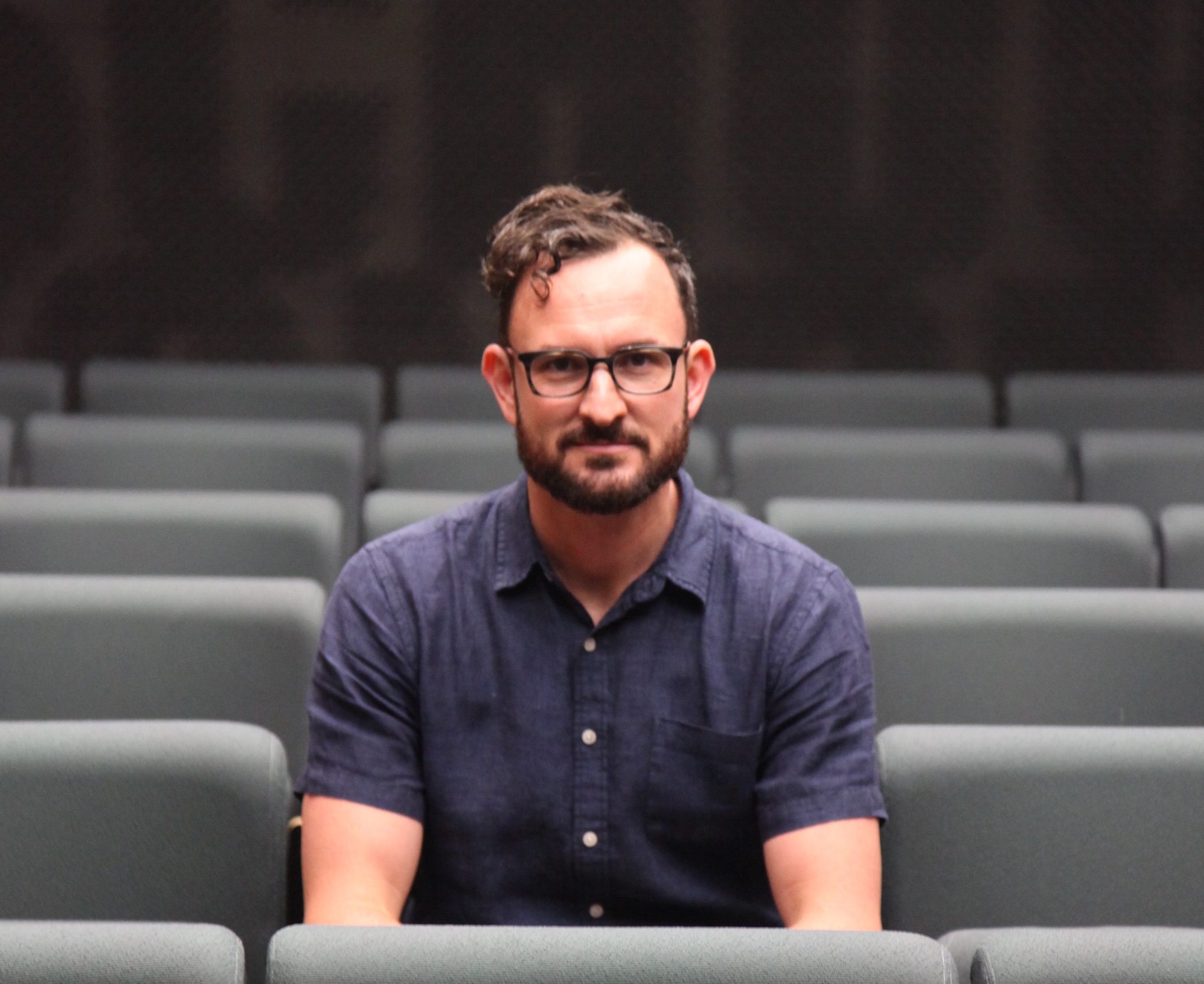COTTER CHRISTIAN – New Director of BFA Interior Design

After studying theater at Marymount Manhattan College in New York City, Cotter began his professional career by holding various roles in the field from performing, directing, designing, scenic painting, and development. In the theatre he cultivated a love of storytelling, suspension of disbelief, and how an audience can be transported through dialogue, design, and imagination. He carries these concepts into his research and teaching of interior design.
Cotter saw interior design as a way to further explore some of the richness of scenic design in a context that would impact a potentially larger audience. This led him to pursue a Master of Arts in Interior Design from the Savannah College of Art and Design (SCAD). After receiving his degree, he collaborated on healthcare, corporate, academic, and science and technology projects as an interior project designer at Perkins+Will in Atlanta. In practice, he earned NCIDQ registered interior designer as well as LEED Accredited Professional status. Simultaneously, Cotter was an adjunct professor at SCAD, teaching Construction Technology, Thesis Prep, Interior Design History, Materials, and Studio courses. Increasingly, he found himself drawn to the theoretical and conceptual opportunities afforded by academia and earned a Master of Fine Arts in Studio Art from Georgia State University. Cotter was inspired by the interdisciplinary culture of GSU, allowing a research interest to emerge that investigated interior design and its close relationship to installation art. His thesis exhibition, “You are [T]here”, initiated an obsession with technology and placemaking that continues to strongly influence his work.
Following his time at in Atlanta, Cotter helped start the interior design program at the Hong Kong campus of SCAD, and was actively involved in initiatives to encourage sustainable design at the University though his work as Chair of the sustainability council and, in greater Asia, with the USGBC affiliate group, Platinum. Research and writing conducted during this time include investigations into the way that locative social media is impacting the interior design user experience journey which resulted in a co-written paper and presentation at the Design Experience Conference at Hong Kong Baptist University. His interest in placemaking extended into a co-authored article with Catherine Normoyle in the journal, Design Principles and Practices, on “Understanding Characteristics of Citizen-driven Placemaking Endeavors Across Diverse Communities” which looked at how everyday citizens are creating place in their surroundings. He has also co-authored a forthcoming book chapter with Catherine titled “Motion Design in the Context of Place” which will be published in Kinetic Emergence: The Theory and Practice of Motion Design.
Since returning to the United States and joining the faculty at Parsons, Cotter has been actively involved in both the Interior Design Educators Council (IDEC) and is also serving on the board of Interior Designers for Legislation in New York (IDLNY). At Parsons he is engaged with the Scholarship of Teaching and Learning community and serves on the Committee for Undergraduate Education as well as the School Curriculum Committee. His current research investigates the relationship between contemplative practices, design process, and interior design education. Stemming from a deep personal relationship to mindfulness, meditation and other contemplative practices, and, as a reaction to the way in which technology has disconnected us from our physical surroundings, he is currently exploring how contemplative techniques can be used in the classroom as a way for students to become more present, focused, and empathetic designers. Concurrently, he is also looking at how space can be designed to elicit self reflection, more specifically, how design can trigger a sense of awe, leading to increased pro-social behavior. It is his hope that by better understanding these phenomena and using these practices during the design process, that the interconnectedness among people, the environment, interior designer, and society at large can be reinforced.
Cotter is honored to be newly named as the director of the BFA Interior Design program at Parsons. At over one hundred years old, and one of the first programs of its kind in the United States, he is humbled by the legacy of interior design at Parsons and eager to uphold its reputation as leader in socially responsible design.